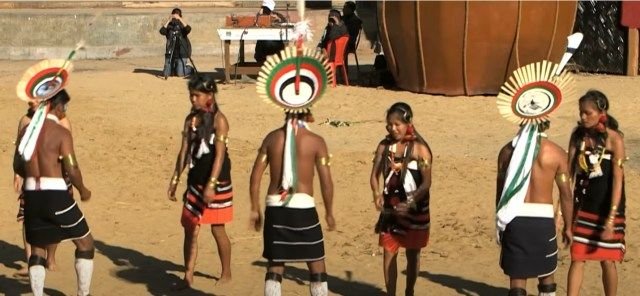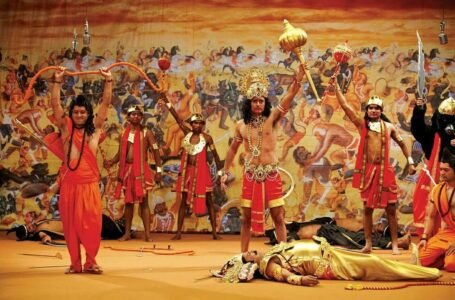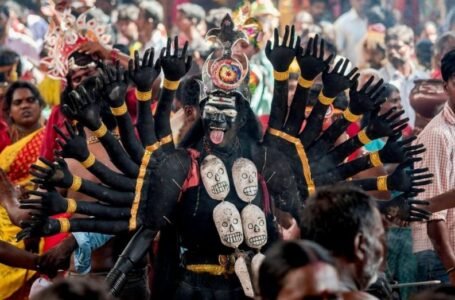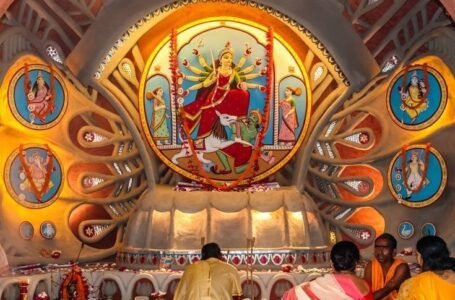Zeliang Dance of Nagaland: A Tribal Celebration of Unity and Culture

Nagaland, a northeastern state of India, is home to some of the bravest warrior tribes. Among them, the Zeliangrong Naga tribe, residing in the hilly terrains of Mount Barail, holds a rich cultural heritage. This tribe is well known for its traditional dance forms, the most remarkable being the Zeliang dance. This dance is not just a performance; it is a celebration of unity, nature, and community bonding.
Unlike many Naga dances that are male-dominated, the Zeliang dance stands out as it allows equal participation of women, reflecting the tribe’s progressive cultural values. Over time, with modernization and shifting social structures, this dance, once an integral part of festivals and rituals, is now mostly seen in cultural showcases and tourism events. However, it still remains a vital link to the tribe’s past, identity, and traditions.
This article delves into the history, significance, performance style, costumes, musical elements, and the challenges faced by this unique dance form today.
Historical and Cultural Significance of Zeliang Dance
The Zeliangrong tribe consists of three major subgroups: Zeme, Liangmai, and Rongmei. These communities have preserved their traditions through oral storytelling, songs, dances, and rituals. Dance, in particular, plays an essential role in their social and spiritual life, acting as a means of communication, celebration, and expression of gratitude towards nature.
Origins and Purpose of the Dance
The Zeliang dance falls into three primary categories:
- Festive dances – Celebrated during harvest festivals, community feasts, and joyous occasions.
- Religious dances – Performed to honor deities and seek divine blessings.
- War dances – Showcasing the valor and bravery of warriors, often performed before or after battles.
The Zeliang dance is a festive form, performed for entertainment, unity, and cultural expression. It is accompanied by synchronized clapping, rhythmic foot-stomping, and chanted hymns, creating an energetic and immersive experience. The dance reflects the tribe’s communal harmony, strength, and connection with nature.
Performance of Zeliang Dance
Setting and Staging
Traditionally, the Zeliang dance is performed on open dry ground in village courtyards. However, in modern settings, stages are constructed to accommodate larger audiences.
Entry and Formation
The dancers enter in a straight line, showcasing symbolic gestures and movements to captivate the audience.
Once positioned, they form a circle or a geometric pattern.
Their upright posture and forceful stomping movements are key elements of the performance.
Dance Movements
The dance begins with slow synchronized foot movements, gradually increasing in pace with the rhythm of drums and chants.
Stomping the feet to the beat of the drum is a defining feature.
Dancers clap and chant hymns in unison, adding a unique vocal element to the performance.
The dance continues in repetitive sequences, forming a mesmerizing pattern of movement and sound.
The vibrancy of the costumes, the resonating beats of the drums, and the energetic participation of both men and women make the Zeliang dance a visual and auditory spectacle.
Dance Costumes: A Symbol of Tribal Identity
The Zeliangrong tribe’s attire is an essential aspect of the dance, reflecting their aesthetic sensibilities, warrior heritage, and craftsmanship.
Men’s Attire
A loincloth with intricate threadwork, tied with a white cloth around the waist.
A decorative stocking covering the legs from ankle to knee.
Chunky metal jewelry, including armlets and necklaces, adding a warrior-like appearance.
Elaborate headgear, adorned with colorful cloth rings, bamboo extensions, and feather tufts.
Women’s Attire
A blouse and knee-length skirt, richly adorned with tribal patterns.
Silver jewelry, including necklaces, earrings, armlets, and anklets.
Both men and women perform the dance barefoot, symbolizing their connection with the earth.
Musical Elements and Instruments Used
Unlike many traditional dances that rely on multiple instruments, the Zeliang dance primarily uses drums and vocal chants to maintain rhythm and energy.
- Drum (Khuang)
The primary instrument used in the performance.
Made of wood with animal skin stretched over it, producing deep resonating beats.
The rhythm of the drum dictates the pace and intensity of the dance.
- Jemji (Horn Instrument)
Often used in ceremonial dances to produce high-pitched sounds.
Made from animal horns, adding a distinct musical layer.
- Bamboo Instruments
Various bamboo percussion instruments add to the natural and earthy feel of the performance.
The most unique feature of the Zeliang dance is the chanting of hymns by dancers themselves, enhancing the spiritual and communal atmosphere.
Decline and Challenges Faced by Zeliang Dance
Despite its rich cultural value, the Zeliang dance is facing a decline due to several factors:
- Modernization and Urbanization
Younger generations are migrating to cities, leading to a loss of traditional knowledge.
Tribal festivals are less frequent, reducing opportunities for performances.
- Changing Socio-Economic Conditions
Western influences have led to a shift in cultural preferences, with traditional dances becoming less popular.
Many young people prefer contemporary dance forms over traditional ones.
- Limited Documentation and Preservation Efforts
Since the Zeliangrong culture relies heavily on oral traditions, written records and digital documentation are scarce.
The lack of formal efforts to teach and preserve the dance poses a risk to its continuity.
- Commercialization and Loss of Authenticity
The dance is now mostly performed at cultural festivals and tourism events, often losing its original ritualistic meaning.
In some cases, performances are stylized for entertainment, deviating from traditional forms.
Revival and Preservation Efforts
To ensure the survival of this cultural gem, various initiatives are being undertaken:
- Community-Led Training Programs
Elders and cultural experts are organizing workshops for younger generations.
Schools and colleges are incorporating folk arts in their curriculum.
- Government and NGO Support
The Nagaland Tourism Department promotes the dance at cultural festivals like the Hornbill Festival.
NGOs are working on digital documentation and archiving of traditional dances.
- Integration into Contemporary Art Forms
Fusion performances, where traditional Zeliang dance is blended with modern storytelling and music, help attract wider audiences.
By implementing these measures, the Zeliang dance can be preserved and revitalized, ensuring its legacy for future generations.
Conclusion
The Zeliang dance of Nagaland is more than just a performance—it is a cultural expression, a symbol of unity, and a bridge between the past and present. Despite challenges posed by modernization, efforts are being made to keep this vibrant tradition alive.
By documenting, promoting, and educating younger generations, the Zeliang dance can continue to thrive as a testament to the rich heritage of the Zeliangrong tribe. Whether performed in its traditional setting or adapted for modern audiences, it remains a powerful reminder of Nagaland’s deep-rooted tribal identity and artistic excellence.


